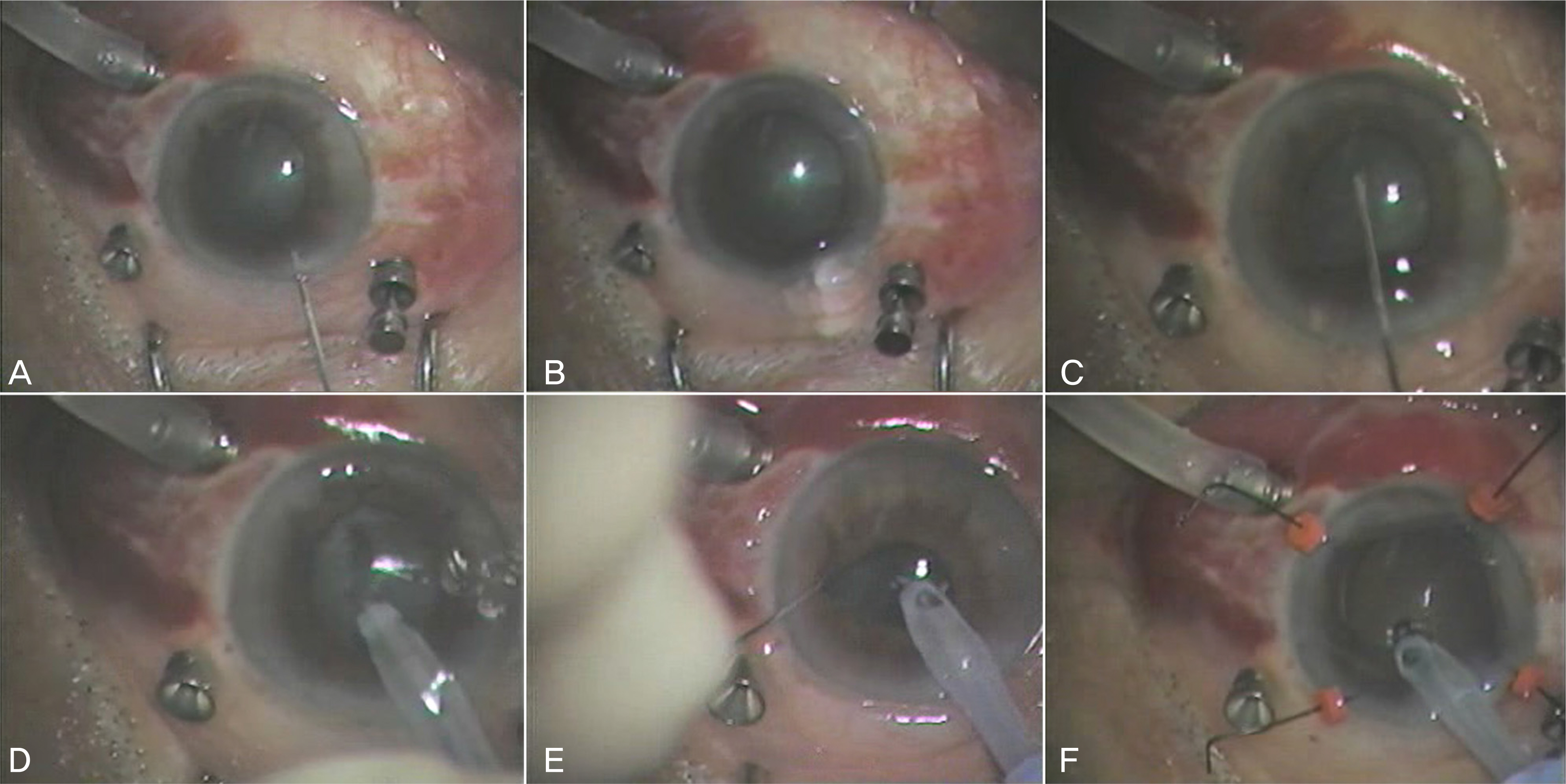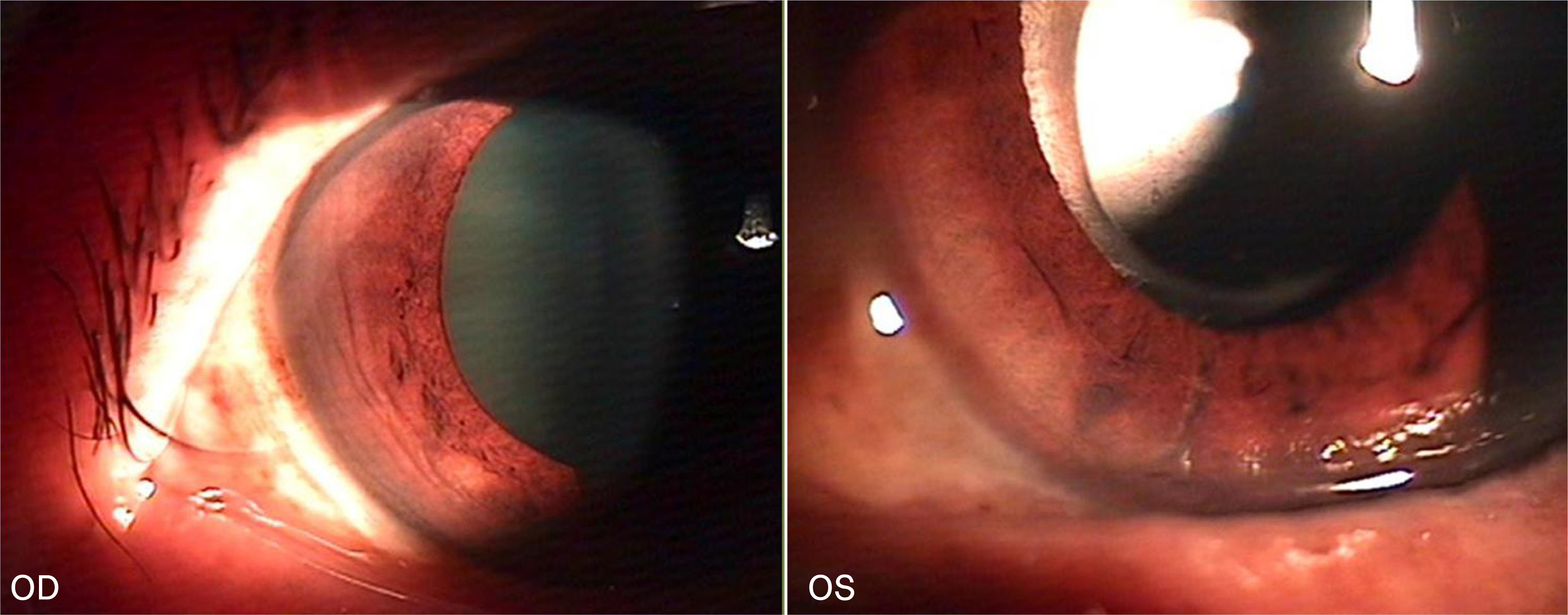J Korean Ophthalmol Soc.
2009 Oct;50(10):1586-1589. 10.3341/jkos.2009.50.10.1586.
A Case of Intraoperative Floppy Iris Syndrome in a Patient Using Tamsulosin
- Affiliations
-
- 1Department of Ophthalmology, Gachon University Gil Hospital, Incheon, Korea. eyedawns@gilhospital.com
- KMID: 2212780
- DOI: http://doi.org/10.3341/jkos.2009.50.10.1586
Abstract
- PURPOSE
To report a case of Intraoperative Floppy Iris Syndrome (IFIS) experienced during pars plana vitrectomy and phacoemulsification in a patient using tamsulosin, which is a selective alpha 1 adrenergic antagonist.
CASE SUMMARY
A 77-year-old male who had used tamsulosin for the previous month for prostate cancer visited our clinic with left visual disturbance, that had developed a week earlier. The best-corrected visual acuity of the left eye was 0.02 and both pupils showed incomplete mydriasis. Pars plana vitrectomy and phacoemulsification with PCL implantation were performed on his left eye to correct a left cataract and retinal vein occlusion with vitreous hemorrhage. Phacoemulsification idenfied a billowing iris and progressive pupillary constriction. Therefore, we administered an intracameral epinephrine injection and applied an iris hook. The procedure was completed successfully without any complications. The best-corrected visual acuity of the left eye was good as at 0.9, and iris depigmentation and atrophy were checked two months postoperatively in the right eye, which had not had any previous surgical history.
CONCLUSIONS
A detailed medical history taking is essential because IFIS may raise the risk of intraoperative complications, such as posterior capsule rupture, especially when the small pupil is small. Safe procedures must be planned with cessation of tamsulosin at least a week preoperatively.
MeSH Terms
-
Adrenergic Antagonists
Aged
Atrophy
Cataract
Constriction
Epinephrine
Eye
Humans
Intraoperative Complications
Iris
Male
Medical History Taking
Miosis
Mydriasis
Phacoemulsification
Prostatic Neoplasms
Pupil
Retinal Vein Occlusion
Rupture
Sulfonamides
Visual Acuity
Vitrectomy
Vitreous Hemorrhage
Adrenergic Antagonists
Epinephrine
Sulfonamides
Figure
Cited by 1 articles
-
Incidence and Risk Factors of Intraoperative Floppy Iris Syndrome During Cataract Surgery
Ho Gyun Park, Sangkyung Choi
J Korean Ophthalmol Soc. 2014;55(1):73-78. doi: 10.3341/jkos.2014.55.1.73.
Reference
-
References
1. Chang DF, Campbell JR. Intraoperative floppy iris syndrome associated with tamsulosin. J Cataract Refract Surg. 2005; 31:664–73.
Article2. Oshika T, Ohashi Y, Inamura M, et al. Incidence of intraoperative floppy iris syndrome in patient on either systemic or topical a1- adrenoreceptor antagonist. Am J Ophthalmol. 2007; 143:150–1.3. Takmaz T, Can I. Clinical features, complications, and incidence of intraoperative floppy iris syndrome in patients taking tamsulosin. Eur J Ophthalmol. 2007; 17:909–13.
Article4. Kershner RM. Intraoperative floppy iris syndrome associated with tamsulosin. J Cataract Refract Surg. 2005; 31:2239.
Article5. Nguyen DQ, Sebastian RT, Kyle G. Intraoperative floppy iris syndrome associated with tamsulosin. Letter. J Cataract Refract Surg. 2005; 31:2240.6. Nguyen DQ, Sebastian RT, Philip J. Intraoperative floppy iris syndrome associated with tamsulosin. Letter. BJU Int. 2006; 97:197–9.7. Lawrentschuk N, Bylsma G. Intraoperative floppy iris syndrome and its relationship to tamsulosin: a urologist's guide. BJU Int. 2006; 97:2–4.
Article8. Schwinn DA, Afshari NA. Alpha 1-adrenergic antagonists and floppy iris syndrome: tip of the iceberg? Ophthalmology. 2005; 112:2059–60.9. Bidaguren A, Irigoyen C, Mendicute J. Floppy-iris syndrome associated with tamsulosin. A prospective case-control study Arch Soc Esp Ofthalmol. 2007; 82:349–54.10. Chang DF, Osher RH, Wang L, Koch DD. A prospective multi-center evaluation of cataract surgery in patients taking tamsulosin (Flomax). Ophthalmology. 2007; 114:957–64.11. Blouin MC, Blouin J, Perreault S, et al. Intraoperative floppy iris syndrome associated with a1-adrenoreceptors; comparison of tamsulosin and alfuzosin. J Cataract Refract Surg. 2007; 33:1227–34.12. Chang DF, Brage-Mele R, Mamalis N, et al. Clinical experience with intraoperative floppy-iris syndrome: Result of the 2008 ASCRS member survey. J Cataract Refract Surg. 2008; 34:1201–9.13. Foglar R, Shibata K, Horie K, et al. Use of recombinant alpha 1-adrenoreceptor to characterize subtype selectivity of drugs for the treatment of prostatic hypertrophy. Eur J Pharmacol. 1995; 288:201–7.14. Wikberg-Matsson A, Uhlen S, Wikberg JE. Characteriazation of α1-adrenoreceptor subtypes in the eye. Exp Eye Res. 2000; 70:51–60.15. Cheung CM, Awann MA, Sandramouli S. Prevalence and clinical findings of tamsulosin-associated intraoperative floppy iris syndrome. J Cataract Refrat Surg. 2006; 32:1336–9.16. Shah N, Tendulkar M, Brown R. Should we anticipate intraoperative floppy iris syndrome (IFIS) even with very short history of tamsulosin? Eye. 2009; 23:740.
Article17. Schwinn DA, Afshari NA. Alpha(1)-adrenergic receptor antagonists and the iris: new mechanistic insights into floppy iris syndrome. Surv Ophthalmol. 2006; 51:501–12.18. Vasavada A, Singh R. Phacoemulsification in eyes with a small pupil. J Cataract Refract Surg. 2000; 26:1210–8.
Article



